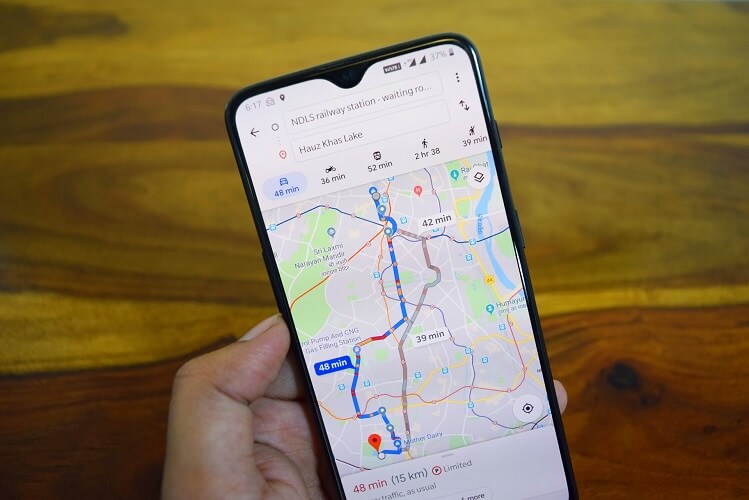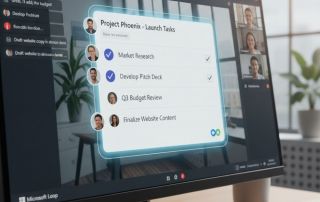New features in Google Maps
After an extensive update of probably the most popular navigation software app on Android devices, Google has now introduced some innovations that make the map service even more versatile than already.
So there is now an “AR function Live View” with the exploration of unknown holiday regions made even more interesting.
New features in Google Maps
After an extensive update of probably the most popular navigation software app on Android devices, Google has now introduced some innovations that make the map service even more versatile than already.
So there is now an “AR function Live View” with the exploration of unknown holiday regions made even more interesting.
Augmented reality “Live View” in Google Maps
One of the most innovative features in Google Maps is probably the function “Live View”, which is based on augmented reality technology. The AR function is used to show the user during navigation practical pointers indicating the direction to be taken.
In particular, for people with a rather moderate sense of orientation, who are a bit struggling with the standard navigation, the “Live View” function in Google Maps could be a real help, because here is enough a quick look to know where to go, rather than the road on the most quite clear display to look for.
According to Google, this feature has been successfully tested by Local Guides and selected Google Pixel owners.
Augmented reality “Live View” in Google Maps
Improved reservation function
For those who travel a lot, Google implemented another helpful tool.
Via the menu “My Places” – “Reservations” you will find a list of all planned trips. There you can then select any trip and directly display the flight and hotel reservations. Fortunately, this feature is also available offline, so you do not have to worry about bad internet connections that are still abundant in Germany ..
Improved reservation function
New timeline on Google Maps
Furthermore, Google has revised the function of the “timeline”, so that can be displayed over years, the visited places and shops.
This could prove to be quite useful if, for example, you can not remember the name of a restaurant after a long time, and perhaps want to go there again. As this list becomes more and more crowded over the course of time, the places visited can also be displayed by category (eg country, city, bar, restaurant, sight, etc.).
The lists collected in this way can later even be forwarded to friends and acquaintances.
Initially, the new timeline was introduced exclusively for Android users. An update for iOS but should follow.
Note:
Of course, the feature only works if you have enabled location history in the settings of your device.
Popular Posts:
AI in everyday office life: Your new invisible colleague
AI won't replace you – but those who use it will have a competitive edge. Make AI your co-pilot in the office! We'll show you four concrete hacks for faster emails, better meeting notes, and solved Excel problems. Get started today, no IT degree required.
Fünf vor Zwölf: Wie Sie erkennen, dass Sie kurz vor dem Burnout stehen
Erschöpfung ist normal, doch wenn das Wochenende keine Erholung mehr bringt und Zynismus die Motivation ersetzt, stehen Sie kurz vor dem Burnout. Erfahren Sie, welche 7 Warnsignale Sie niemals ignorieren dürfen und warum es jetzt lebenswichtig ist, die Notbremse zu ziehen
Die Renaissance des Büros: Warum Präsenz manchmal unschlagbar ist
Homeoffice bietet Fokus, doch das Büro bleibt als sozialer Anker unverzichtbar. Spontane Innovation, direktes Voneinander-Lernen und echtes Wir-Gefühl sind digital kaum zu ersetzen. Lesen Sie, warum Präsenz oft besser ist und wie die ideale Mischung für moderne Teams aussieht.
New Work & Moderne Karriere: Warum die Karriereleiter ausgedient hat
Die klassische Karriereleiter hat ausgedient. New Work fordert ein neues Denken: Skills statt Titel, Netzwerk statt Hierarchie. Erfahre, warum das "Karriere-Klettergerüst" deine neue Realität ist und wie du dich mit 4 konkreten Schritten zukunftssicher aufstellst.
Die Homeoffice-Falle: Warum unsichtbare Arbeit deine Beförderung gefährdet
Produktiv im Homeoffice, doch befördert wird der Kollege im Büro? Willkommen in der Homeoffice-Falle. "Proximity Bias" lässt deine Leistung oft unsichtbar werden. Lerne 4 Strategien, wie du auch remote sichtbar bleibst und deine Karriere sicherst – ganz ohne Wichtigtuerei.
Microsoft Loop in Teams: The revolution of your notes?
What exactly are these Loop components in Microsoft Teams? We'll show you how these "living mini-documents" can accelerate your teamwork. From dynamic agendas to shared, real-time checklists – discover practical use cases for your everyday work.
Popular Posts:
AI in everyday office life: Your new invisible colleague
AI won't replace you – but those who use it will have a competitive edge. Make AI your co-pilot in the office! We'll show you four concrete hacks for faster emails, better meeting notes, and solved Excel problems. Get started today, no IT degree required.
Fünf vor Zwölf: Wie Sie erkennen, dass Sie kurz vor dem Burnout stehen
Erschöpfung ist normal, doch wenn das Wochenende keine Erholung mehr bringt und Zynismus die Motivation ersetzt, stehen Sie kurz vor dem Burnout. Erfahren Sie, welche 7 Warnsignale Sie niemals ignorieren dürfen und warum es jetzt lebenswichtig ist, die Notbremse zu ziehen
Die Renaissance des Büros: Warum Präsenz manchmal unschlagbar ist
Homeoffice bietet Fokus, doch das Büro bleibt als sozialer Anker unverzichtbar. Spontane Innovation, direktes Voneinander-Lernen und echtes Wir-Gefühl sind digital kaum zu ersetzen. Lesen Sie, warum Präsenz oft besser ist und wie die ideale Mischung für moderne Teams aussieht.
New Work & Moderne Karriere: Warum die Karriereleiter ausgedient hat
Die klassische Karriereleiter hat ausgedient. New Work fordert ein neues Denken: Skills statt Titel, Netzwerk statt Hierarchie. Erfahre, warum das "Karriere-Klettergerüst" deine neue Realität ist und wie du dich mit 4 konkreten Schritten zukunftssicher aufstellst.
Die Homeoffice-Falle: Warum unsichtbare Arbeit deine Beförderung gefährdet
Produktiv im Homeoffice, doch befördert wird der Kollege im Büro? Willkommen in der Homeoffice-Falle. "Proximity Bias" lässt deine Leistung oft unsichtbar werden. Lerne 4 Strategien, wie du auch remote sichtbar bleibst und deine Karriere sicherst – ganz ohne Wichtigtuerei.
Microsoft Loop in Teams: The revolution of your notes?
What exactly are these Loop components in Microsoft Teams? We'll show you how these "living mini-documents" can accelerate your teamwork. From dynamic agendas to shared, real-time checklists – discover practical use cases for your everyday work.


































